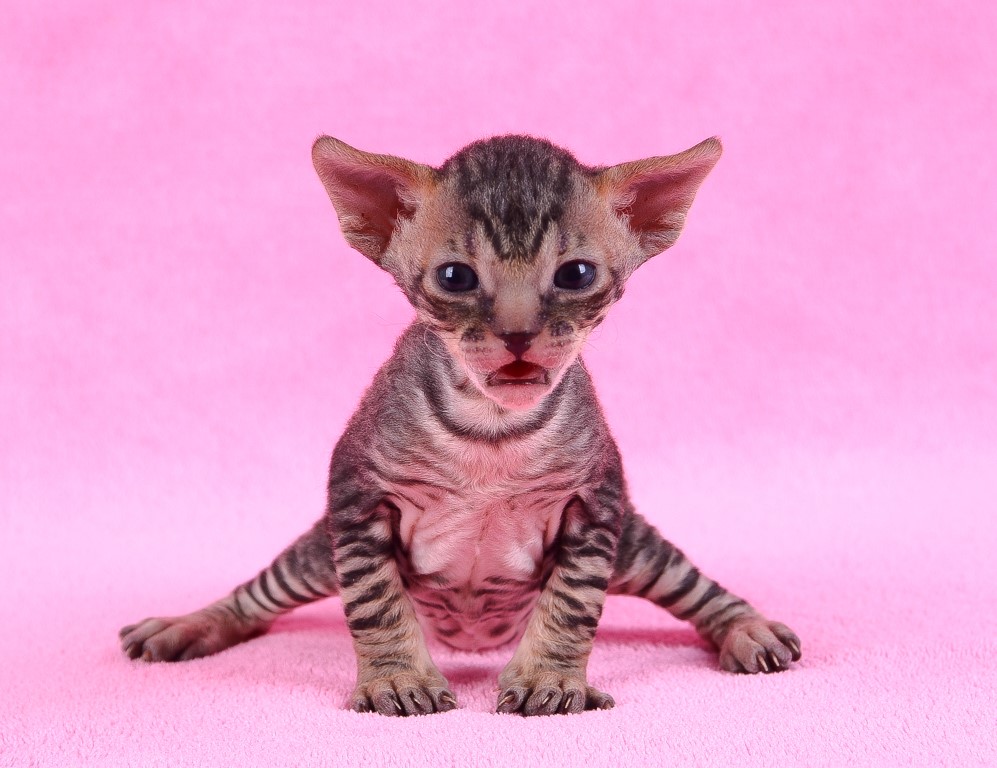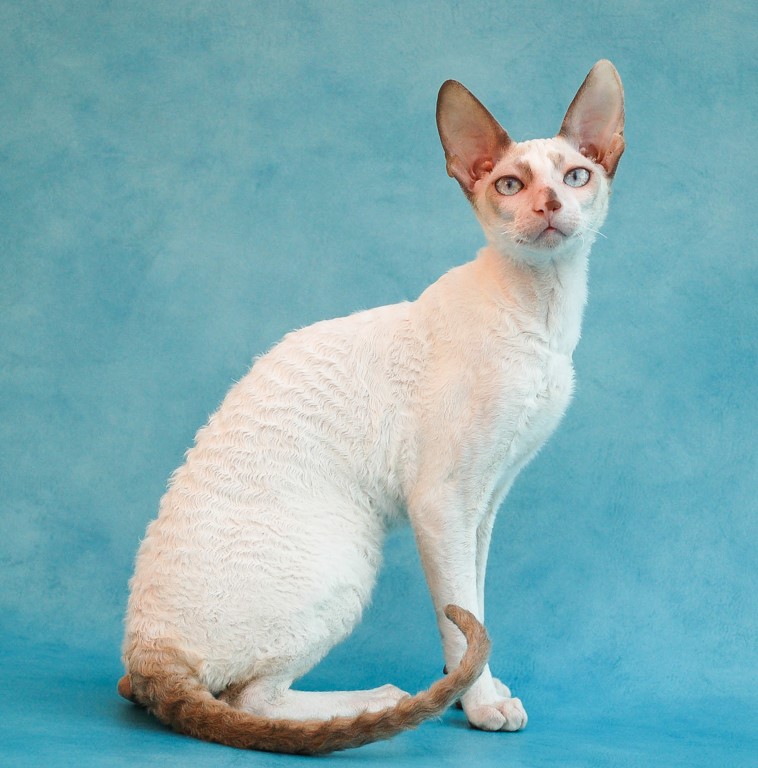History
The cat that was the father of the Cornish Rex was Kallibunker, a cream kitten born on the 21 of july 1950 in Cornwall. He was born out of a domestic cat called Serena. The owner, Mrs Ennismore noticed that Kallibunker was unusual and that his coat displayed curls and waves and that he had a wedge shaped head, slender body a long tail and bat-like ears.
Mrs Ennismore’s vet suggested to mate him again to his mother. Mrs Ennismore sadly stopped breeding in 1958 due to a number of reasons but fortunately Mr Brian Sterling-Webb took over and outcrossed with Burmese, British shorthairs . Later on the Russian blue and Siamese were added to strenghten the genetic pool.
In 1957 Mrs Ennismore sent two cats to Mrs Blancheri in California. One of them produced America’s first litter. The first association to give the Rex official status was the Cat Fanciers Association(CFA) of America in 1964. Britain’s Governing Council of the Cat Fancy (GCCF) only granted status in 1967.


